
CLIMATE CHANGE: There are no options
Climate change is inevitable, but disaster and catastrophe are not
Sadly Sri Lanka has not contributed greatly to the current situation but, as global citizens, we share the responsibility to ensure that Sri Lanka and indeed this world is left in a condition in which future generations can prosper By implementing them sooner than later, it places us in a win-win scenario. For example, by harvesting and storing rainwater during higher rainfall seasons, we can increase our climate resistance whilst also addressing our current developmental objectives.
Climate change is now internationally accepted as a scientific fact. At present, the global climate is changing at an unprecedented rate and on an unprecedented scale. The driving force behind these changes is human action, principally through the emission of carbon into our atmosphere. We are witnessing the impact of global warming on our environment, our economy and our society. The recent floods that devastated Sri Lanka is a prime example of this. The science is clear that if systemic changes are not addressed at local, national and international levels, climate change has the potential to severely impact the world that current and future generations will inhabit. In this sense, global warming constitutes a challenge that is both immediate and inter-generational. It is imperative that we, as a nation, cognizant of the very vital, vibrant and spiritual connection between people and nature, act to nurture and protect the environment. We must also recognise that climate change will bring social and economic challenges that will only mount if we are not proactive in managing them.
Therefore it is in the interest of our environment, our people and of future generations that we act swiftly and unequivocally. But we must do so in a way that is measured, well informed, and equitable to all citizens.
Sri Lanka, as a developing island state, surrounded by the sea and dependent on agriculture, is particularly vulnerable to the impacts of climate change. These impacts will be far reaching and potentially devastating:
The current amplitude of sea level rise is occurring at a rate unmatched in the previous two millennia – to put that into perspective, sea level has not been this high since the arrival of prince Vijaya. Sea level rise not only puts coastal communities and settlements at risk, but increases salinity in coastal areas and can render large swathes of currently arable land as agriculturally useless. This has the potential to make regional livelihoods and national food security both critically vulnerable to this danger.
Climate change increases the frequency and intensity of natural disasters. In coming years, floods, droughts, cyclones and storm surges are predicted to become more frequent and more devastating.
Climate change will fundamentally alter monsoonal patterns. Fluctuations in annual rainfall in Sri Lanka are predicted to increase and cause far greater spatial variation between wet and dry areas. Ultimately, models suggest that wet areas will become wetter and dry areas will become drier. Such a shift is likely to adversely affect agriculture and food security. Historical paddy seasons Maha and Yala will change, which is an unprecedented change in the entire civilization of this country. Sri Lanka’s hydro-power, which provides 42% of our electricity is reliant on rain falling in the right places – which fluctuations and spatial variability might affect.
In total, the economic impact of climate change in the agricultural sector alone may rise to as much as 39 billion rupees. Indeed, the impacts on water resources inevitably flow on to impacts on electricity generation and the availability of potable water. Together, these impacts will be multiplied throughout economic and social spheres. The integrated nature of the physical, environmental, social and economic impacts of climate change demonstrates that it represents a systemic problem that poses a systemic risk, which must be dealt with through systemic transition. Its impact will be felt across all government sectors, all parts of industry and all levels of society.
Sadly Sri Lanka has not contributed greatly to the current situation but, as global citizens, we share the responsibility to ensure that Sri Lanka and indeed this world is left in a condition in which future generations can prosper.
In this sense, blame and despair are not options, and neither is idleness. By adopting a forward-thinking and pragmatic approach, Sri Lanka can lead as an example, towards which other developing countries and island states can look for inspiration to tackle and adapt to climate change.
While Sri Lanka is not solely nor significantly responsible for climate change, we are responsible for how we respond to it. All nations currently have the option to mitigate the effects of climate change by reducing greenhouse emissions, and the option to adapt to whatever changes is likely to occur in spite of these mitigation efforts.
As a small, developing island nation we have limited options in making a substantial contribution in mitigating the inevitability of climate change. We do, however, have the ability to adapt to these changes. While the European Union take lead on climate change mitigation, we can take lead in adaptation.
Climate change is inevitable, but disaster and catastrophe are not.
Scientists have identified how a changing climate has the potential to damage our environment, economy and society, which provides a roadmap for how we might respond. Based on this wisdom, and our forward thinking, we have the capacity to innovate, and transition the nature of our economy and society to better cope with these changes.
The earlier we think and act, the more flexible our adaptations will be. We should view our vulnerable position in the face of a warming planet not as hopeless, but as an opportunity to lead the world in adaptation and innovation. As members of a conscious and connected global community, we can stand at the vanguard of vulnerable developing nations committed to exercising their adaptive agency in the face of climate change.
We have demonstrated our leadership, resilience and adaptive capacity before. The country has rebuilt from natural disasters with admirable resilience. Within development spheres we have also risen to the challenge: We have achieved near universal literacy and health care, helping the country achieve a middle income status coupled with a high human development index rank. Action on climate change will be a crucial part of our journey as we move on from the Millennium Development Goals to achieving the Sustainable Development Goals.
In many cases, climate change adaptation interventions can be considered “no regrets” initiatives – being of benefit regardless of the effects of global warming. By implementing them sooner than later, it places us in a win-win scenario. For example, by harvesting and storing rainwater during higher rainfall seasons, we can increase our climate resistance whilst also addressing our current developmental objectives. Similarly, promoting better irrigation techniques, wastewater recycling and groundwater utilisation are all of social and economic benefit regardless of whether a changing climate will lead to a regional decrease in precipitation.
It is projected that by 2040, Sri Lanka will experience water stress almost three times baseline levels. This is true even under an ‘optimistic’ climate scenario. It is only by recognising and accepting our vulnerability to situations such as these that we can implement effective adaptive measures in order to reduce the negative effects we will feel as a nation.
Much work has been done to improve climate resilience and climate awareness in the global finance sector. Although these relate largely to mitigation of climate change, they have a significant impact on the global economy, which Sri Lanka, particularly our industrial sector, is a part of. Transition to a low carbon global economy would mean that we would have to change and adapt to regulatory changes in the outside world. We are well aware of the impacts on our economy from the isolationist practices, for example the loss of the GSP+ concession. Our economy cannot afford such ignorance, we should be at the forefront in terms of governance, and more importantly research led governance which ensures that we are informed and prepared to face regulatory changes. If we are at the forefront, we are not only prepared to adapt but we will be prepared to reap the benefits from the global transition to a low carbon economy. The world has now woken up to the magnitude of the challenge that climate change poses to humankind. This is signified by the global agreement of COP 21 in Paris, at which 190 countries, including Sri Lanka, signed on to commit to tackle climate change and its impacts.acting with cognizance and prudence will not only reap benefits to us and the country, but to future generations too.
Source: 23/09/2016 Daily Mirror ,http://www.dailymirror.lk/116274/Climate-change-There-are-no-options
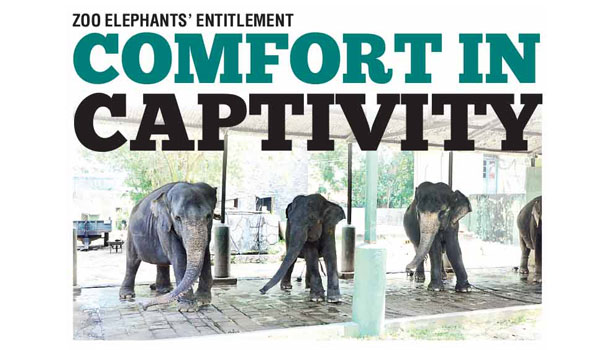
Zoo Elephants’ entitlement comfort inn captivity
For most of us, the Dehiwala Zoo is a place of interest as there are so many animals to be viewed; but for some others, it is a place where large animals that cannot speak are forced to entertain and are confined to small areas and remain chained for most of their lives.
Elephants at the Dehiwala Zoo cannot remember a day when they were free of chains. The Dehiwala Zoo commenced operations in 1939 and is one of the oldest zoos in Asia; however, since its inception no director general saw it fit to rid these poor animals of their chains.
When Ceylon Today visited the Dehiwala Zoo, the most heartbreaking sight was that of a baby elephant lifting its front leg and trying to remove the chain with the trunk and another in another similar scene, another elephant calf was trying to remove its chain from the leg by its trunk. This is the stress and trauma these majestic animals are put through just so that visitors can come and stare at them. These elephants in captivity are highly stressed and this is visible by the way they sway backwards and forwards while confined to their small enclosures and kept for viewing.
The African elephant Jora was brought from Botswana together with a female Nandipa around 1995. Nandipa died at the zoo in 2005. Since then, the zoo officials have seen no need to get Jora a partner. Jora remains tied in a small area at the zoo.
According to zoo officials Jora is not allowed to interact with the other elephants because he is of a different species. According to former Deputy Director Department of Wildlife Conservation (DWLC) and elephant expert Dr. Nandana Atapattu elephants are social animals and require the company of other animals.
But despite the plight of these animals local and foreign visitors can be seen blatantly taking pictures and showing their children these animals in chains as if they were a painting to be admired.
The decision to construct an open elephant enclosure for the first time in the history at the zoo was taken by a former Director General of the zoo Brigadier H.A.N.T Perera way back in 2004. It was Brigadier Perera who understood the suffering of these large animals and decided it was about time they were freed of their chains. The extent of the elephant area at the time was six acres and the estimated cost was Rs 35 million. However, the land allocated for the open elephant enclosure was reduced to a little more than one acre; due to the lack of space, at the Dehiwala Zoo.
The open elephant arena was to be completed by the first quarter of 2005. But even today, zoo officials are still struggling to complete this elephant enclosure.
Acting Director General Dammika Malsinghe told Ceylon Today that work on the open elephant enclosure was stopped temporarily; due an internal problem with the Buildings Department. “I have spoken to the relevant officials and work on the elephant enclosure will commence soon. When the elephants are kept in a free roaming area, minus their chains, the mahouts lose control over the animals. Plans are underway to complete the elephant enclosure by the end 2016,” Malsinghe said.
But the zoo authorities are yet to come up with a plan to release Jora the African elephant from his chains. “When the elephant enclosure is complete all the elephants except the African elephant will be put in the new enclosure. We have to decide if we are to keep Jora at Dehiwala or send him to the Hambantota Safari Park,” Malsinghe said.
The delay in the construction of the open elephant enclosure through the years was due to the change in directors, before the work was completed. With the change in government Brig. Perera was removed from his post as Director General and his plans for the open elephant arena was delayed.
The previous, Director General, Bashwara Gunaratne, who took office in 2010, told Ceylon Today at the time, that the open elephant enclosure would be completed by December 2011. However, Gunaratne’s tenure as Director General was over in mid 2012 and the open elephant enclosure was not completed when he left.
In late June 2012, the then Director General Anura de Silva, told Ceylon Today, that they hope to complete the open elephant enclosure by December 2012. “Due to a lapse on the part of the State Engineering Corporation work on the elephant arena was further delayed and not completed in December 2012. I have told the State Engineering Corporation, that work on this area has to be completed by the end of August 2013. We are not in a position to cancel the agreement we have signed with the State Engineering Corporation as they were chosen after having called for tenders.” De Silva said at the time.
“When some of the elephants tested positive for Tuberculosis they were kept in the area where the open elephant enclosure was to be built and work was delayed further.”
“If an elephant is tame there is no need to use the bullhook and chains to control the animal. If there are professional and experienced mahouts they should know how to command and control the animals. Elephants are intelligent animals and understand better than humans. In foreign zoos Asian and African elephants are kept without chains. If an elephant can’t be taken without chains then don’t take that animal anywhere. Elephants walk for 20 kilo metres a day in the jungle. Some animals may walk in one place and go round and round but that amount of distance is covered by the animal. This exercise helps to keep the animal’s body healthy. If, however, the animal exceeds 20 kilo metres he will stop and rest for a while. At least five acres of land is needed for five adult elephants to roam in an open enclosure. If the Dehiwala Zoo doesn’t have enough space to keep these elephants they should be taken to a place where there is sufficient space for the elephants to roam,” Dr.Atapattu explained.
The zoo is also criticized for forcing elephants to perform at the elephant show every day at 4.30 p.m.
“I hate to see elephants standing on their heads, sitting on small stools and standing on two legs to perform. The elephant doesn’t play the mouth organ even though children are made to believe that they do. 20 per cent of the breathing is done by the elephant’s mouth and 80 by the trunk. When the mouth organ is kept close to the elephant’s mouth every time, the elephant breathes, the mouth organ makes a sound. I detest elephants being forced to perform these gimmicks due to fear of the ankus and the kris knife. Fruits are given to elephants when they perform a trick, just like giving a baby a chocolate. Elephant shows have been a zoo feature since the inception of the zoo and it is high time this was stopped,” Dr. Atapattu explained.
Zoologist Dilan Peiris says not many people know the meaning of a zoo. “The purpose of a zoo is to conserve and protect its animals for future generations. All zoos should work towards the welfare of the animals. But the Dehiwala Zoo is not moving forward but backwards when it comes to animal welfare. The elephant performance at the Dehiwala Zoo shows that there is no animal welfare when it comes to these animals. The elephant shows should be stopped immediately. Why should animals be forced to perform to entertain visitors? Forcing these animals to perform is not good for their health. Educational programmes should be introduced for children at the Dehiwala Zoo. The zoo should not be closed down but should be improved where animal welfare is concerned,” Peiris explained.
Zoo officials, however, have no plans of stopping the elephant performance. “The elephant show is continuing at the zoo. But some items such as the elephants standing on stools and in an up-right position were stopped recently. The item where the elephants stand on their heads was stopped some time ago. Educational items such as how an elephant carries a log have been introduced to the show instead,” Malsinghe said.
The first elephant show was in 1947. However Jora the African elephant and Bandula are not taken for the elephant shows. Bandula is used to carry the elephants meals that consist of leaves and branches to the elephant shed. While transporting the food Bandula is untied for a short period of time. Bandula the oldest male elephant was brought to the zoo in 1949.
Source : 20/09/2016 Ceylon Today, http://www.ceylontoday.lk/print20160701CT20161030.php?id=5785
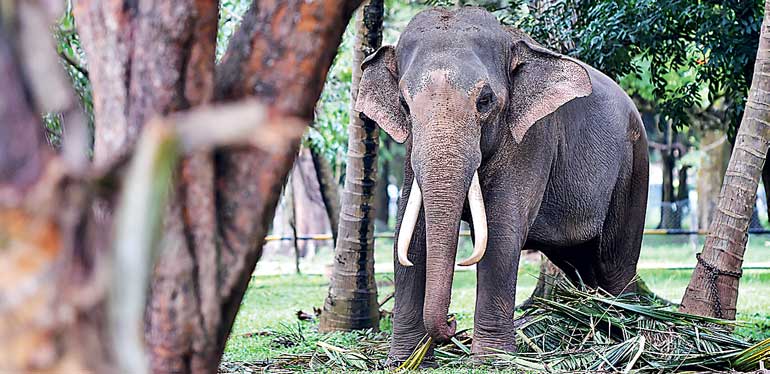
Sri Lanka to shift farmers from elephant corridors
Sri Lanka today announced it was planning to relocate farmers living on the edges of forests inhabited by elephants to reduce the numbers killed on both sides.
Wildlife minister Gamini Jayawickrama Perera said the island’s elephant population had dropped to 6,000, from 7,379 counted five years ago, as deadly encounters between animals and humans increase.
“Although various measures like erecting of electric fences were taken to prevent human-elephant conflicts, so far this has not been resolved,” Perera said in a statement.
“Steps are being taken to resolve the issue by relocating the inhabitants in identified elephant migratory pathways.”
He did not say how many farmers would be relocated in 18 affected districts out of the island’s total of 25. But elephant expert Jayantha Jayewardene said he believed thousands were encroaching on elephant habitats and moving them would be a challenge.
“Sri Lankan elephants usually don’t migrate from one area to another, but what has happened is that thousands of farmers have encroached and split the traditional habitat of elephants.
“This means frequent clashes and we need a much more thought out plan to deal with the problem,” Jayewardene told AFP. “Evicting thousands of people will not be easy. One thing is sure, more elephants than people get killed in this battle.”
Elephants are considered sacred animals in Sri Lanka and killing them is a criminal offence, punishable by death.
But officials said there had been a rapid expansion of farms near wildlife parks, shrinking elephant habitats and causing frequent clashes between the two.
Official figures show 270 people and 942 elephants were killed in such encounters across the country over four years to 2014. Some 5,095 homes were damaged during the same period.
Wild elephants were also killed after being hit by trains and due to floods and lightening strikes. Female elephants are known to have been killed so that their babies can be snatched and kept as pets.
Owning a baby elephant is a status symbol in Sri Lanka although authorities recently began a crackdown against the trend.
Source : 15/09/2016 Business standard http://www.business-standard.com/article/pti-stories/sri-lanka-to-shift-farmers-from-elephant-corridors-116091400954_1.html
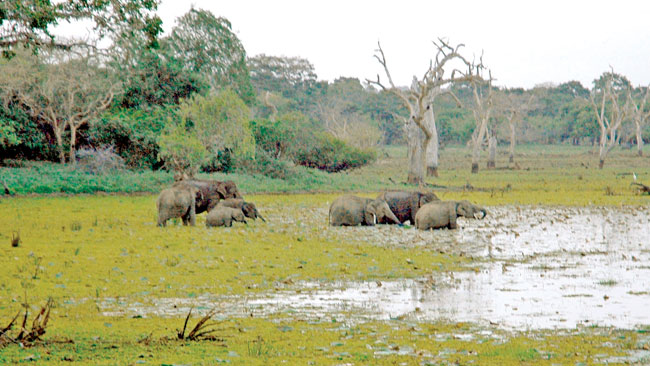
Wildlife Act to be amended
Sustainable Development and Wildlife Minister Gamini Jayawickrama Perera said that steps are being taken to amend the Wildlife Act of 1932 to fall in line with the changing times.
A committee has been appointed to amend the present Wildlife Act which is over 80 years old and make suitable recommendations, the Minister told the Sunday Observer yesterday.
“We have to look into international agreements and the Convention on International Trade in Endangered Species of Wild Fauna and Flora (CITES) when effecting amendments to the Act. We have to abide by the international law on endangered species,” he said. The CITES is an international agreement between Governments to ensure that international trade in specimens of wild animals and plants do not threaten their survival. This year, the CITES Conference will be held in South Africa from September 24 to October 5.
“Our biggest problem is that the Wildlife Ministry was corrupt in the past. Various complaints had been made against the officials by politicians and they became helpless. Some of them had got into trouble as a result of various Commission Reports,” the Minister said.
According to the Minister, the number of tourist arrivals in the country would be around 2.5 million by the end of this year. Sri Lanka had recorded 1.8 million tourist arrivals last year. In 2015, the Wildlife Ministry had remitted Rs. 3,500 million to Government coffers. At present, the Ministry is faced with a shortage of approximately 1,500 workers including the marine sector.
“I have submitted a Cabinet paper in this regard. We can’t run national parks without an adequate number of workers.
For example, if we take Minneriya National Park, it has only 12 trackers while its daily income exceeds Rs. 3 million. Nearly 300 vehicles visit Minneriya daily. The situation in Yala and other National Parks is more or less the same,” he said. The Minister said that the Wildlife Ministry generates an income of Rs. 22 million per day and that this will exceed Rs. 25 million by end of this year.
Source : 11/09/2016 Sunday Observer http://www.sundayobserver.lk/2016/09/11/new17.asp
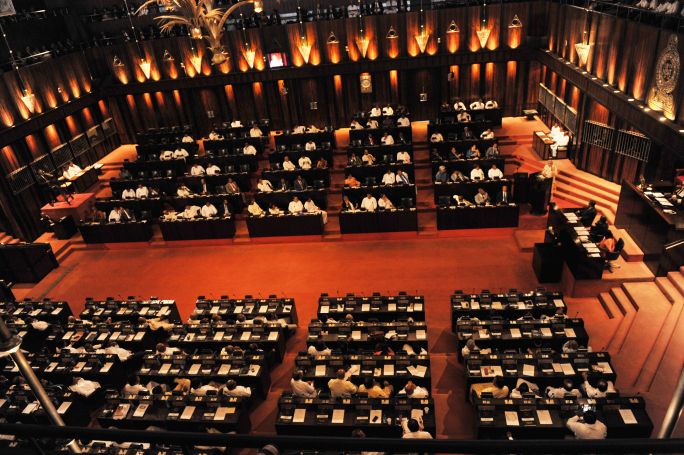
Sri Lanka focusing on Green Sustainable Development
Sri Lanka is focusing on green sustainable development as envisaged in the Maithri Palanayak Election Manifesto, said Prime Minister Ranil Wickremesinghe in Parliament yesterday.
He said the government had already approved a Sustainable Development Council Bill and the same has been referred to Provincial Councils for their observations. He added that following their observations, the government could debate on it and pass the bill in Parliament, adding that following the bill being passed, the Sustainable Development Minister could come up with new plans for the future.
He made these observations moving the Ratification of the Paris Agreement on the United Nation’s Framework Convention on Climate Change adopted in New York on May 09, 1992.
He said that he was happy that Parliamentarians take a keen interest on the matter and he should also explain as to why a change in Parliamentary business is needed to bring this forward.
“Global Climate Change has captured our attention during the last few decades. The United Nations adopted the framework at the Convention on Climate Change in 1992. But the problem was that the countries could not agree to the steps to be taken. We can see how long it had taken for global countries to come into an agreement. The problem was that, developed countries did not need to control the emission as they thought their own development process would be affected, Premier Wickremesinghe said. “We are well aware that during the last two centuries, the the industrial revolution, the rapid development of the world economies, the World War 11, use of atomic weapons, the test on nuclear weapons, etc. have made a significant impact on the Global Climate Change. Therefore,concerning the Climate Change, the expected 1.5 to 2 Celsius degree increase is getting exceeded. As I told you earlier, the waters of the Mahaweli river could get affected, while tea cultivation too could be affected. Due to this reason, there had been many meetings held, while last was in Copenhagen which also ended without reaching any agreement despite the efforts made as many countries were looking at their own interest.”
He said that it was possible for a country to develop fast, while controlling its emissions. “We are happy that Europe and Japan took the lead on these matters. However, the Paris Climate Talks last year reached a decision. I won’t say that I was 100 percent satisfied with it, but it was a great leap forward. Now the process of ratification has commenced. For ratification requires fifty five percent of the countries with 55 percent of the global emission to ratify the agreement for it to come into force. Although many countries have agreed to it, there are still issues in some of the western countries and also in some of the Asian development economies. While they agree to control emissions, these are major issues coming up when they face the forthcoming elections in western countries this year and next year,” Premier Wickremesinghe said.
He said in this background, it gave us great encouragement that the President of the United States of America and the President of China agreed to ratify the agreement prior to the G 20 Meeting. “Following it, many countries and parliaments have decided to go ahead to ratify the agreement. Sri Lanka is concerned that President Maithripala Sirisena’s manifesto agreed to take all necessary measures to protect the environment. The President has taken over the Environmental Ministry and had taken many measures to protect the environment. So, we have a great responsibility to ratify this agreement. Sri Lanka has the ambition for rapid development, however it should be a green development.
The government has already approved a Sustainable Development Council Bill. It has been sent to the Provincial Councils. I have asked the Provincial Council Minister to expedite the process so that we could debate it and pass it here. Later, we could take other necessary measures. In this background, we have to ratify it quickly, by ensuring that at least by the time the UN General Assembly meets, there would be ample ratifications at the November meeting this year by the time this agreement would come into force. We had discussed this matter with President Maithripala Sirisena. We felt that Parliament should ratify this agreement before President Maithripala Sirisena’s visit to New York for the General Assembly in November. This is the last week that we could sit before the President’s visit to New York”, Premier Wickremesinghe said. “So we moved this agreement.”
Source :10/09/2016 Daily News http://epaper.dailynews.lk/art.asp?id=2016/09/10/pg10_0&pt=p&h=

Climate change unavoidable, climate summit told
Conference Hall (BMICH) yesterday, he said the world carbon dioxide level reached 450 parts per million (ppm) by March 2015.
The Paris Agreement was adopted by consensus on December 12, 2015 at the 21st Conference of the Parties (COP 21) of the UN Framework Convention on Climate Change (UNFCCC) in Paris. “We were talking about keeping it below 350 ppm. Unless we have an immediate transition in the world economy, which is based on fossil fuel, we are not going to have these types of reductions in the immediate terms,” he said.
“President Maithripala Sirisena had committed to implement the obligations of Paris Agreement in full and the Cabinet has approved the ratifications of the Paris Agreement last week and it will be tabled in Parliament and debated on the same day and approved unanimously in Parliament,” the Minister in Charge of Science, Technology and Research Susil Premajayantha said. “If technology keeps on improving and transfer as agreed in the COP 21, the temperature increase may be more controlled and there would be a better chance of survival,” the Minister further said.
Experts have forecast that even with the Paris Agreement, the global temperature would rise by 3 to 4 degree Celsius by the end of the century, Director of the Centre for Environmental Justice Hemantha Withanage said.
“The climate change is unavoidable and without any measures taken the world temperature may rise eight to ten degrees,” he said. While addressing the first day of the conference of the Paris Agreement on Climate Change and Sri Lanka’s readiness held at the Bandaranaike Memorial International
Source : 08/09/2016 Daily Mirror

Mini hydro power plants; money spinner for few; disaster for nature
Mini hydro power plants are steadily conquering the energy sector in Sri Lanka. Amidst much controversy, private companies, politicians and other influential people have resorted to this new avenue of earning a few more bucks. Even though the drainage pattern of the country is well suited for Small Hydro Power Plants (SHP), with the availability of fast flowing water to generate hydroelectricity centralized in the highlands; not all potential locations are necessarily environmentally viable. According to a research conducted by the Environmental Foundation Limited (EFL) the implementation of such less or unviable projects would lead to the irreversible damage of the environment that has a direct effect on the natural resources and ecosystem services to the communities. The Central hills and their surrounding slopes also contain most of the country’s biodiversity, especially within Protected Areas (PA’s) – areas protected under the legislation of Sri Lanka. These are called ‘NoGo’ areas for mini-hydro power plants. However, the current trend is to ignore these restrictions and establish a weir to get the maximum water flow for power generation neglecting the existing biodiversity. Further, there have been many instances where proposed project locations were shown to lie outside PA’s but lie within the PA in reality.
![]()
The initial Environmental Impact Assessment (EIA) is supposed to be the key document that determines whether the project is acceptable in the grounds of environmental, social and geological impacts and whether the environmental clearance should be granted for the said project. It is one of the principle documents needed for the approval process stipulated by the Sustainable Energy Authority (SEA), which is the main project approving agency for mini hydro power plants.
- “The IEE is not only meant to identify potential environmental, social and geological impacts but also supposed to address hydrological features which may prove the projects’ viability”
However, it fails in its objective of identifying errors and unfeasible projects due to many reasons for which the detailed discourse is timely. Supporting reports and studies for gaining approvals are the most likely to contain inaccurate, false or inadequate information, especially the Initial Environmental Examination (IEE) report. The IEE is not only meant to identify potential environmental, social and geological impacts but also supposed to address hydrological features which may prove the projects’ viability. However, EFL and many other environmentalists have encountered several instances where it was found that the proposed quantity of energy cannot be produced by the river/stream and subsequently jeopardizing the ecological health of the Rivers’ downstream through inadequate provision of the environmental flow.

Quite recently, the Daily Mirror received details about another mini hydro which will be constructed under the supervision of Rivinmo Hydro (Private) Limited, a company run by former Commander of the Sri Lanka Navy, Admiral Wasantha Karannagoda. The project is planned to be constructed within close proximity to Pundalu Oya, which belongs to the Kotmale Divisional Secretariat.
“…another mini hydro will be constructed under the supervision of Rivinmo Hydro (Private) Limited, a company run by former Commander of the Sri Lanka Navy, Admiral Wasantha Karannagoda”
Environmental experts believe that with the construction of mini hydro projects, the biodiversity is facing major threats. People in rural areas thrive on natural resources of water for farming and other purposes while they are an asset during times of drought. With the construction of mini hydro projects, most streams and estuaries would be blocked, affecting the livelihoods of the people. As such villagers in Kumbaloluwa, Madakanda, Niyamgandara, Kosgahapathana, Bogahawela, Katarandana and many other Grama Niladhari divisions use the water from Pundalu Oya for their day-to-day purposes, especially, at times of drought. With the construction of this project, the waterfalls at Egodawela and Wewahena would be affected in addition to several other natural ponds.
Another risk factor is that the location has been identified as an area that is prone to develop landslides.
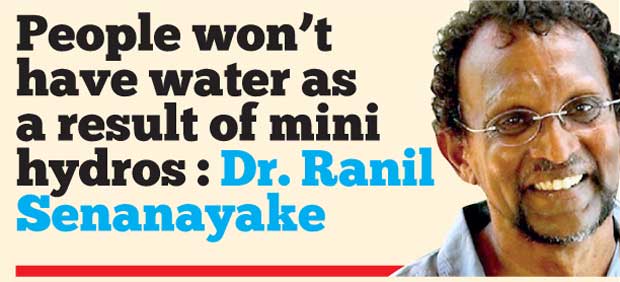
Speaking to the Daily Mirror, Systems Ecologist, Dr. Ranil Senanayake said that mini hydro power plants do have a role to play. “But before they start constructing these they should consider the Downstream Recharge Capacity. But what they do is, they block the water flowing through the stream and send it through a tube. Once the water start going through a tube, the biodiversity is adversely affected. This is an important aspect to consider because they take water from the downstream. Mini hydros do contribute but we could get an equal amount of energy if we developed wind or solar power projects as well. These will not interfere with the flow of water in a stream. We live in an island and we thrive on surface water accumulated from rainfall. If these people keep building mini-hydros ultimately we will not have any water for consumption or for any daily use.”
“Mini hydros do contribute but we could get an equal amount of energy if we develop wind or solar power projects as well”
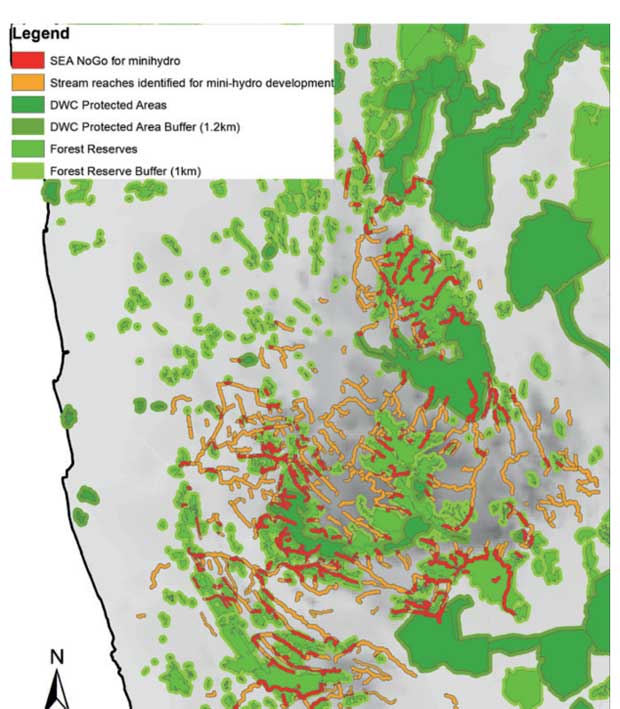

In his comments to the Daily Mirror, Central Environmental Authority (CEA), Director Hemantha Vithanage said that back in 2001 several private companies decided that an IEE would be sufficient to carry out mini hydro projects. “An IEE doesn’t require any public hearing unlike an EIA which is open for the public for a period of 30 days. Within this time, the people in that particular area can voice out their concerns in relation to the proceedings of the project. According to my knowledge, mini hydro projects cause an irreversible damage to the ecosystems in which various species survive.
“According to my knowledge, mini hydro projects cause an irreversible damage to the ecosystems in which various species survive”
We have to protect the endemic species in this country along with other natural resources like the waterfalls. For example there are only two water orchids endemic to Sri Lanka as of now and 19 species of fish. Another problem with these procedures is the fact that these people identify a 3 metre high waterfall as a ‘water drop’. As a result close to 70 locations within close proximity to a waterfall have been identified as sites for these mini hydro plants. As far as I know, there are no studies done about the impact this type of projects would cause to the biodiversity of the country. This has turned out to be a mafia for political bigwigs and private companies. I suggest that these people use alternate methods of providing energy to the national grid either through solar or wind power plants which would be less damaging to the environment as well.”

In an attempt to find more details regarding the impacts of this project, the Daily Mirror spoke to a villager, under condition of anonymity said “They still haven’t started working on the project. However, they have given the proposal suggesting few locations to the CEA but according to my knowledge, these locations had been rejected by the CEA. Many villagers are against this project. Nevertheless, it was alleged that Admiral Karannagoda had promised to build roads and benefits for the villagers in an attempt to proceed with the project. As a resident I believe that a project of this nature would cause great damage to the environment.”

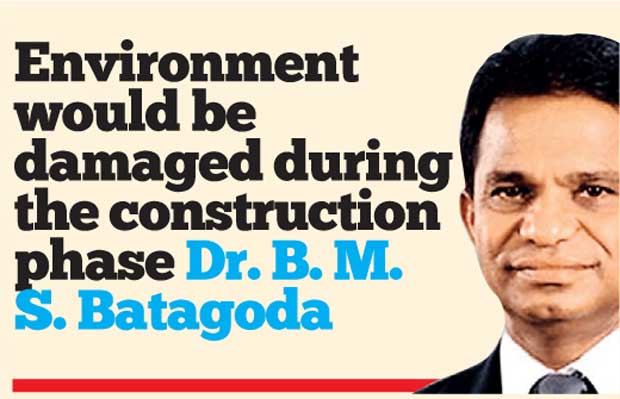
Dr. B.M.S. Batagoda, Ministry of Power and Sustainable Energy Secretary said that mini hydro power plants are one of the best resources that Sri Lanka could ever have. “These projects are definitely beneficial to our country. If not, we would not have any fuel and therefore, we have to rely on wind, solar and hydro power.
Our dream is to become an energy self-sufficient nation. Of course there is a certain amount of environmental damage done during the construction phase. Therefore we have suggested the CEA identifies all sensitive waterfalls and gazette them. Thereafter the remaining waterfalls could be utilized for the projects. The only issue is that people are not working together. Sometimes the developer is trying to find money and there is minimum coordination between the people and the developers. As of now there are around 75 projects which have been approved and I believe that around another 100 more projects will be approved in future.”
Source : 06/09/2016 Daily Mirror //www.dailymirror.lk/115321/Mini-hydro-power-plants-money-spinner-for-few-disaster-for-nature#sthash.HQio0gpB.dpuf
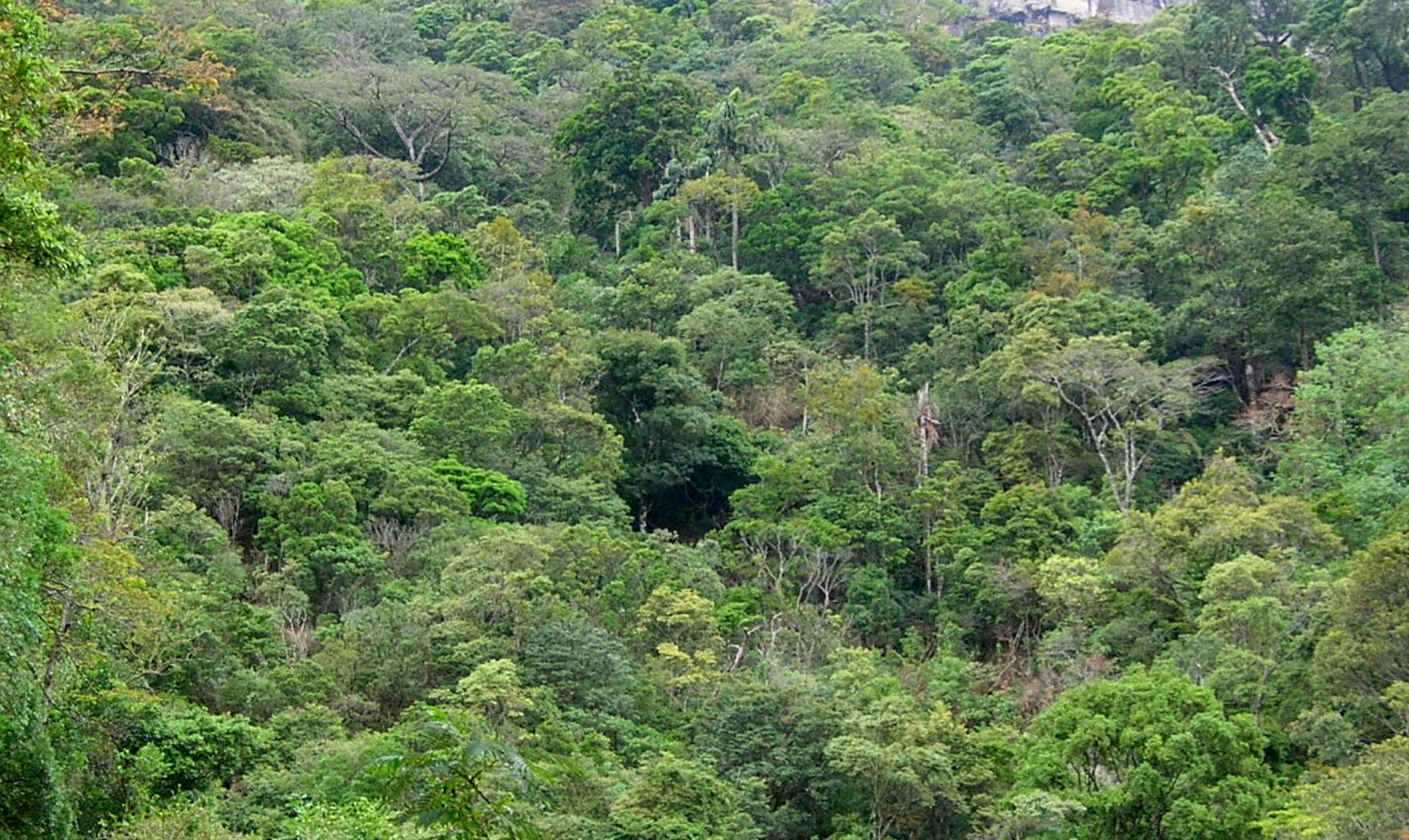
Sri Lanka to protect forests with US$45mn World Bank project
Sri Lanka’s forest and wildlife protection agencies will start project to help communities living near protected habitats to improve livelihoods and make use of natural resources without degrading or over exploiting, the World Bank said.
The World Bank is giving a 45 million dollar credit for a project that wll involve 15,000 residents, 30 percent of them women, living near protected habitats improve their livelihoods and develop income streams such as eco-tourism.
“Sri Lanka is blessed with a rich endowment of eco-systems,” Idah Pswarayi-Riddihough, World Bank Country Director for Sri Lanka and the Maldives said in a statement.
“Striking a fair balance between economy and ecology is crucial, not only for the preservation of the ecosystem but also for helping people emerge from poverty.”
“Managing this natural heritage is the responsibility of all Sri Lankans. Benefits of well managed eco-systems include, improved national economy as well as addressing challenges such as human wild life conflicts and climate change effects.”
Sri Lanka’s government wants to expand forest cover.
The project will also will develop human-elephant co-existence mechanisms and protect watersheds to boost agricultural productivity.
“The project will improve responsible planning and management of protected areas and other biologically and ecologically important locations throughout Sri Lanka,” said Darshani De Silva, Senior Environment Specialist and Project Task Team Leader.
“It will help to create sustained linkages with communities living adjacent to protected areas to ensure participation in protection of critical ecosystems and benefit sharing..”
It will improve the quality of visitor services, and raise revenue potential of forest and wildlife resources.
The capacity of Forest Department and Department of Wildlife Conservation will also be boosted to better carry out their work.
Source : 2016/09/05 Economic Next http://www.economynext.com/Sri_Lanka_to_protect_forests_with_US$45mn_World_Bank_project-3-6036-13.html
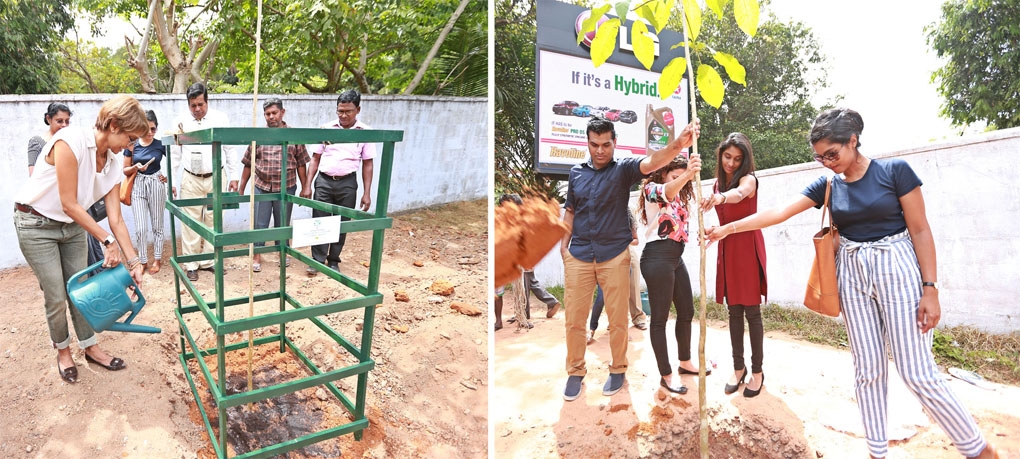
Otara Foundation launches tree planting initiative in Colombo
The Otara Foundation is partnering with the Colombo Municipal Council to increase the tree cover within the city of Colombo with a project to plant 184 trees such as Ehela, Moodilla, Karanda, Kohomba, Takomaria and Kaha-Mara, most of which are native to Sri Lanka.
The project kicked off on Tuesday 30th August with the planting of 20 Tabeuia rosea trees along Cambridge Place Colombo 7.
Among the other streets identified by the CMC to be lined with these trees are Thurstan Road, R. A. De Mel Mawatha (Duplication Road) and Galle Road.
The Otara Foundation said it will bear the cost of the trees and the protective guards around them and will also be donating branded tabards to the 25 CMC workers who will be responsible for the maintenance of the trees.
“Colombo was once much greener than it is today, and had many picturesque tree-lined roads that were cherished by the city’s residents and visitors,” said Ms Otara Gunewardene, founder and Director of the Otara Foundation. “I believe we can make Colombo and indeed Sri Lanka green again. If we each make a firm resolve to guard our trees and forests as well as get involved and plant a few trees even in our own homes or neighbourhoods, we would be doing a great service to Sri Lanka and our future generations. It is important to remember that humans as well as animals need trees for survival, so it is in our best interest to safeguard them and plant more of them. It is heart-breaking to see the rapid destruction that is happening to beautiful Sri Lanka. It is time to protect our precious environment before it is too late.”
Close to 80 per cent of Sri Lanka was under forest cover in the 1900s, but by 2010 this figure had dwindled to below 20 per cent. Sri Lanka’s deforestation rate is now one of the highest in the world with over 1 per cent being lost each year.
Besides helping keep our cities cool, absorbing air pollution and providing shelter and shade, trees produce the oxygen we breathe, help create life-giving rain, reduce erosion, guard against landslides, prevent flooding during heavy rains, produce food for humans as well as animals and are our best weapon against global warming and climate change.
Source : 04/09/2016 Lanka Business News http://www.lankabusinessnews.com/index.php/other/csr-environment/item/4669-otara-foundation-launches-tree-planting-initiative-in-colombo
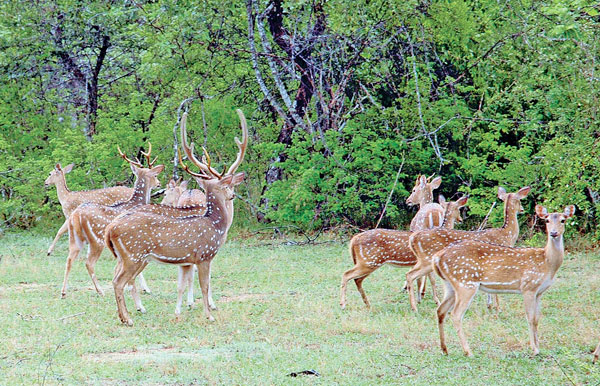
Call of climate change
The focus of the article is to link conservation and access to water to support life and the economy, protecting forests and plants and implementing obligations pertaining to the Paris Climate agreement.
“Climate change has emerged as a key concern for Sri Lanka and its people in the 21st Century. Sea level rise, warming temperatures, uncertain effects on forest and agricultural systems, and increased variability and volatility in weather patterns are expected to have a significant impact in the developing world, where people remain most susceptible to the potential damages and uncertainties inherent in a changing climate.” Source: National Physical Planning Policy and Plan. Sri Lanka 2006-2030 (final draft).
(Pictures by Susantha Wijegunasekara)
Biodiversity and ecosystem services
Sri Lanka has a total land area of 65,610 km2. “Wetlands, both natural and man-made, were the centres of Sri Lanka’s ancient hydraulic civilization and formed the hub of its (Sri Lanka’s) cultural, economic and social evolution. Due to the system of land use adopted in ancient times, catchment areas and other important wetlands in the uplands were preserved under forest cover, while the Dry Zone lowlands were irrigated using water from thousands of rainfed tanks dotted throughout this region. This system of land use served to conserve the biodiversity of natural wetlands. There is also evidence that the conservation of biodiversity in man-made tanks was given consideration in Royal Decrees as early as the 12th Century A.D.” Source: MOFE, 1999.
Here are some examples of ecology and life within. Bees are the most important pollinators of flowering plants including agricultural crops resulting in fruits and seed production. Most of the world’s crops are pollinated by bees comprising more than 20,000 identified species and a similar number of species awaiting identification.
The maritime zone of Sri Lanka is inhabited by 30 species of marine mammals in monsoon scrub jungle in the northwest and southeast, monsoon forest and grassland, inter monsoon forest, rain forests and grasslands below 3000 feet, between 3000-5000 feet and above 5000 feet.
Dry forests, savanna and grasslands are the three major natural terrestrial vegetation types found in the dry land of Sri Lanka.
Four percent of the country’s land area is covered by water (FAO, 2011). Sri Lanka has an extensive network of rivers and streams, most of which arise from the south central massif that rises to 2500 m above sea level. In all, there are 103 distinct natural rivers many of which are perennial, while those in the dry zone are seasonal. Sri Lanka is endowed with a rich array of man-made lakes and canals accounting over 10,000 countrywide, covering more than 127,070 ha, especially in the dry zone.
Sri Lanka harbours over 370 aquatic or wetland plant species of which 12% are endemic to the country. They provide an array of human benefits including food and drinking water, raw material, and medicinal herbs. Wetlands are considered as the transitional zone between land and water and provide several ecological functions such as ground water buffering and reducing pollution.
Why forests will make or break the climate fight
“Reducing emissions is not only about mitigating emissions from our industrial sectors; it can also be about protecting our forests”, forests can also actively sequester carbon dioxide” . Forests also provide ecosystem services such as protection from floods, clean air and water, medicinal plants, and are a sacred and cultural place for many people.
The montane forests, also known as upper montane forests, occur at elevations beyond 1500 m above mean sea level. They share an average temperature of about 16 degrees Celsius and rainfall of above 2000 mm without any marked dry periods, and humidity above 80 percent. Montane forests once formed a more or less continuous cover or cap extending over almost the entire third peneplain of Sri Lanka, encompassing the Pedro, Totapola and Adam’s peak ranges, and the Knuckles range.
Enhancing knowledge and expertise
Research is a key factor to enhancing our understanding of climate science so that we can develop effective adaptation measures. An understanding of regional and local climate is essential to building resilience, as we are located in an area at high risk to the effects of climate change.
Options for adaptation should, prioritize monitoring and identification of the probable impacts of climate change on the most vulnerable and/or important components of biodiversity in the country and promote their conservation, using methods based on both scientific principles and traditional knowledge. The ‘Ecosystem Approach’ promoted by the Convention on Biological Diversity (CBD) offers excellent opportunity to meet this goal.
The Paris Agreement: what’s next?
The agreement provides a framework that allows nations to submit pledges, also known as “nationally determined contributions”, over recurring cycles. The whole of government as well as the economy to realign, to look at ways to bring down our business-as-usual emissions.
Adaptation to climate change is not merely to address projected changes, but to address already manifested impacts that are affecting many ecosystems and species. Conservation of biodiversity and maintenance of ecosystem structure and function are important climate change adaptation strategies because genetically diverse populations and species rich ecosystems have greater potential to adapt to climate change. For example, increasing the health of coral reefs may allow them to be more resilient to increased water temperature and to reduce their susceptibility to bleaching events. (SCBD, 2003).
Source:31/08/2016 Dailly News http://www.dailynews.lk/?q=2016/08/31/features/91849












